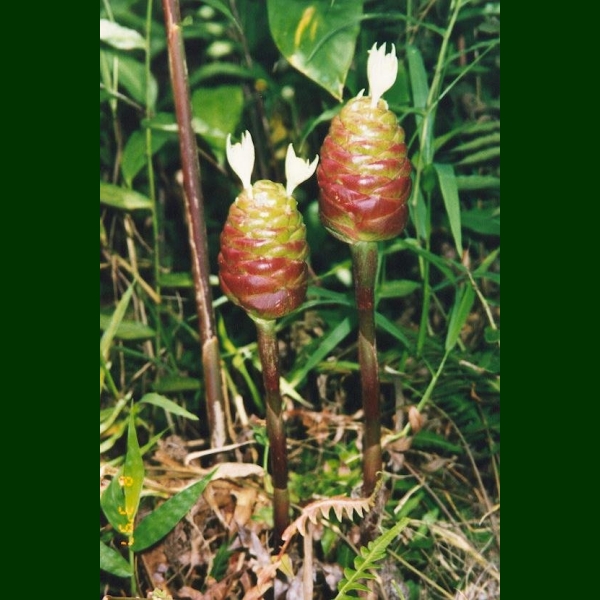 Hawaiian Name(s): ‘awapuhi, ‘awapuhi kuahiwi, ōpuni
Hawaiian Name(s): ‘awapuhi, ‘awapuhi kuahiwi, ōpuniScientific Name: Zingiber zerumbet
Vernacular Name: shampoo ginger, wild ginger
Family: Zingiberaceae
Status: Polynesian introduction
Authority: (L.) Sm.
Description: Deciduous herbs with many leafy shoots 0.75-2 m tall.
Habitat Common in disturbed habitats such as mesic shaded areas (Kaua‘i, O‘ahu, Moloka‘i, Lana‘i, Maui) (Wagner et al. 1990:1623–1624).
Medicines: ‘Awapuhi is used as a compress to apply to sore spots, bruises and cuts; also for headaches, toothache, ringworm/other skin disease, achy joints/sprains, stomach-ache (it is said to have anti-inflammatory properties). Ashes from burnt leaves, combined with a mixture of ashes of ‘ohe lau li‘i (small-leaved bamboo, Schizostachyum glaucifolium) and kukui nut sap (Aleurites moluccana), and ‘awapuhi tuber sap, provided a remedy for cuts and bruised skin. Underground stems were mashed with salt and rubbed on the head to treat headaches (Abbott 1992:102; Chun 1994:61–64).
Non Medicinal Uses: Sometimes used on kuahu (hula altars) (Pukui 1942). Fragrant, sudsy fluid squeezed out of plant for use as shampoo, the powdered rhizome for scenting kapa, and leaves used to flavor meat (Wagner et al. 1990:1624).
Specific gravity of wood: n/a
Famous Locations:
Mele:
`Ōlelo Noeau: ‘Awapuhi lau pala wale. Ginger leaves yellow quickly. Said of a weakling who withers easily, or of anything that passes too soon.
Dye Color and Parts:
Kino lau:
Location on Bishop Museum Kalihi Campus: Yes
Propagation Information:
